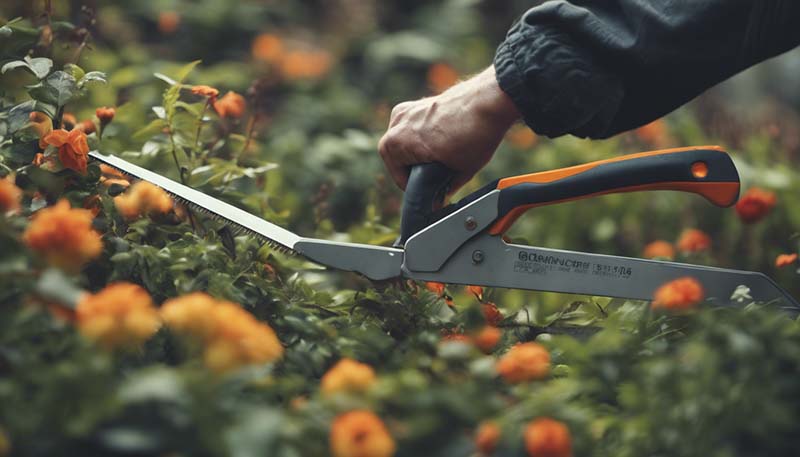The Benefits of Using a Gardening Saw for Cutting and Pruning
The Benefits of Using a Gardening Saw for Cutting and Pruning
Gardening is a rewarding hobby that not only helps to beautify the environment but also provides a sense of accomplishment and tranquility. One of the essential tasks in maintaining a garden is pruning and cutting back plants to ensure their health and aesthetic appeal. A gardening saw is a specialized tool that can make this job much more efficient and precise. In this article, we will explore the various benefits of using a gardening saw for cutting and pruning tasks.
Why Choose a Gardening Saw?
A gardening saw is designed specifically for cutting through branches, stems, and even small trunks with ease. Unlike standard handsaws, which are often used for woodworking, a gardening saw is meant for the outdoor environment and the unique challenges it presents.
1. Durability and Strength
Gardening saws are typically made from high-quality steel, which ensures they are strong enough to handle the tough materials found in a garden. The teeth of the saw are designed to cut through wood without getting stuck or losing sharpness over time.
Advertisement
2. Ergonomic Design
Many gardening saws feature ergonomic handles that are comfortable to grip and provide better control when cutting. This design not only reduces the risk of hand fatigue but also allows for more precise cuts.
3. Versatility
A good gardening saw can handle a variety of materials, from small twigs to thicker branches. Some models even have interchangeable blades that allow you to switch between different cutting tasks.
4. Safety Features
Safety is a primary concern when using any cutting tool, and gardening saws often come with features such as handguards and tooth patterns that minimize the risk of injury.
5. Efficiency
Using a gardening saw can significantly reduce the time it takes to prune or cut back plants. The sharp, durable blade allows for clean cuts with minimal effort, which can be a huge advantage when working on larger pruning jobs.
Types of Gardening Saws
There are several types of gardening saws available, each with its own set of features and ideal applications:
a. Bow Saws
Bow saws have a long, flexible blade connected to a wooden or plastic bow handle. They are excellent for reaching high branches and making long, straight cuts.
b. Pole Saws
Pole saws are similar to bow saws but have an extendable pole, which allows you to cut branches from the ground without the need for a ladder.
c. Folding Saws
Folding saws are compact and portable, with a folding handle that makes them easy to carry around the garden. They are ideal for smaller pruning tasks and quick cuts.
d. Reciprocating Saws
Reciprocating saws, also known as recipro saws, are power tools that offer even greater efficiency for heavy-duty pruning and cutting tasks.
How to Choose the Right Gardening Saw
When selecting a gardening saw, consider the following factors:
- The type and size of the branches you'll be cutting.
- The frequency of pruning and cutting tasks in your garden.
- Your budget and the quality of the saw.
- Any additional features, such as ergonomic handles or safety mechanisms.
Maintenance and Care of a Gardening Saw
To ensure the longevity and effectiveness of your gardening saw, follow these maintenance tips:

- Clean the saw after each use to remove any dirt or debris.
- Sharpen the blade regularly to maintain its cutting efficiency.
- Store the saw in a dry place to prevent rust and corrosion.
- Check for any signs of wear and replace the blade or saw if necessary.
Conclusion
A gardening saw is an indispensable tool for any gardener looking to improve the health and appearance of their plants through proper pruning and cutting. With its durability, ergonomic design, versatility, safety features, and efficiency, a gardening saw can significantly enhance your gardening experience. By choosing the right type of saw for your needs and caring for it properly, you can ensure that your gardening saw serves you well for many seasons to come.
Comment